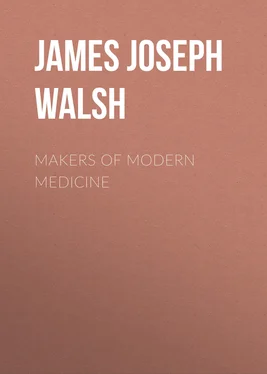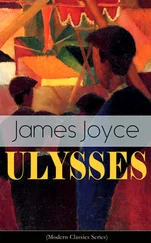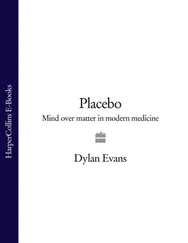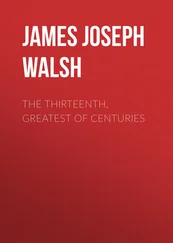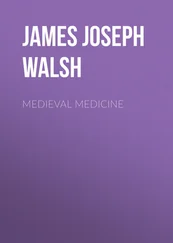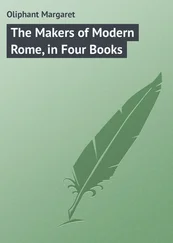James Walsh - Makers of Modern Medicine
Здесь есть возможность читать онлайн «James Walsh - Makers of Modern Medicine» — ознакомительный отрывок электронной книги совершенно бесплатно, а после прочтения отрывка купить полную версию. В некоторых случаях можно слушать аудио, скачать через торрент в формате fb2 и присутствует краткое содержание. Жанр: foreign_prose, Медицина, foreign_antique, на английском языке. Описание произведения, (предисловие) а так же отзывы посетителей доступны на портале библиотеки ЛибКат.
- Название:Makers of Modern Medicine
- Автор:
- Жанр:
- Год:неизвестен
- ISBN:нет данных
- Рейтинг книги:3 / 5. Голосов: 1
-
Избранное:Добавить в избранное
- Отзывы:
-
Ваша оценка:
- 60
- 1
- 2
- 3
- 4
- 5
Makers of Modern Medicine: краткое содержание, описание и аннотация
Предлагаем к чтению аннотацию, описание, краткое содержание или предисловие (зависит от того, что написал сам автор книги «Makers of Modern Medicine»). Если вы не нашли необходимую информацию о книге — напишите в комментариях, мы постараемся отыскать её.
Makers of Modern Medicine — читать онлайн ознакомительный отрывок
Ниже представлен текст книги, разбитый по страницам. Система сохранения места последней прочитанной страницы, позволяет с удобством читать онлайн бесплатно книгу «Makers of Modern Medicine», без необходимости каждый раз заново искать на чём Вы остановились. Поставьте закладку, и сможете в любой момент перейти на страницу, на которой закончили чтение.
Интервал:
Закладка:
Morgagni only forms a final link in the chain of great Italian medical scientists, connecting medieval with modern medicine. From the time of Vesalius to that of Morgagni there was never a period when Italy did not possess the leading medical investigator of Europe. We need only mention such names as those of Fallopius, who added so much to our knowledge of abdominal anatomy; Eustachius, to whom we owe many important details of the anatomy of the head; Spigelius, whose name is forever associated with the liver, and Malpighi, to whom the whole round of the biological sciences allied most closely to medicine owes more than perhaps to any other single investigator, to show the complete justification for this claim. As a matter of fact, every encouragement to the progress of medicine was extended both by the secular and the ecclesiastical authorities in Italy during these centuries, and the Italian peninsula was from the beginning of the sixteenth to the end of the eighteenth centuries the mecca for ardent medical students desirous of exhausting the medical knowledge of their time, quite as Germany has been in our day.
John Baptist Morgagni was born on February 25, 1682. His birthplace was Forli in Romagna. It was the capital of a little papal state, lying at the foot of the Apennines to the southeast of Bologna. The modern American traveler is likely to know something about it, because it is one of the principal stopping places on the road from Bologna to Rimini, for at least the feminine portion of any travelling party will want to make a pilgrimage to the home of Dante's poor Francesca and to the scene of the heroic exploits of Catarina Sforza, the great woman of the Renaissance, to whom in all honor, and without any tinge of the discredit it has since come to convey, was given the proud title of the Virago of Forli. The little town is noted for the beauty of its situation, and well deserves a visit for itself, for it contains a famous palace built after designs made by Michael Angelo. The town had decreased in importance and population at the end of the seventeenth century, when Morgagni was born there, but it was favorably known for the high standard of cultivation among its inhabitants, possessed a good library, a number of schools and a well-known college.
Like many another great man, Morgagni seems to have been especially fortunate in his mother. He was left an orphan at a very early age. His mother, however, whose maiden name was Maria Tornieli, not only bore her loss bravely, but devoted her life and talents to the education of her gifted son. She seems to have been a woman of uncommon good sense and remarkable understanding. Morgagni often spoke of her during the course of his life, and attributed much of his success to the training he had received from her. It is the custom sometimes to think that women have come to exert great cultural influence only in these latter days. Nothing could be more untrue. All through history are abundant traces of women exerting the highest intellectual influences in their own sphere, and the North Italians in their era of highest cultural development seem to have been happier in nothing more than their recognition of the possibilities that lay in providing educational facilities for women.
These times and this part of Italy are famous in history for some of the opportunities afforded women in the matter of higher education. It has been suggested that it is perhaps to the liberal culture of the mothers we owe the fact that this part of Italy furnished for one hundred and fifty years about this time the greatest men in science of the time. It is well known that women occasionally held professorships at the University of Bologna, not far from Morgagni's birthplace. The general culture of the women of this section was very high. Modern masculine historians have even been ungenerous enough to point out that Bologna was famous for two things–the opportunities provided for the higher education of women and the extensive manufacture of various forms of prepared food, the best known of which, the classical Bologna sausage, has come down as a precious heritage to hurried housekeepers in our own time.
After an excellent preliminary education at Forli, always under the careful supervision and enlightened encouragement of his mother, Morgagni, as might have been expected from the place of his birth, went to the neighboring university town of Bologna for his higher studies. Bologna was at this time at the very acme of its reputation as the greatest of existent medical schools. The science of anatomy had been especially developed here as the result of important investigations and discoveries made by some of the greatest men in the history of medical science. Mondino had, very early in the fourteenth century, recreated the modern science of anatomy as we know it. He was the first to realize the importance and urge the necessity for the dissection of human bodies, if any real lasting progress in human anatomy was to be made. Medical teaching before this time had been largely by lectures and disputations upon the work of Aristotle, Hippocrates and Galen, but actual observation on human tissues and organs now replaced the older method. Bologna became a papal city in 1512, and it is especially after this date that, under the fostering care of the Popes, the University of Bologna became the centre of medical teaching for the whole world for several centuries.
As the result of actual observation and patient study instead of idle theorizing there came a large number of great discoveries in anatomy. From Mondino to Morgagni there is a continuous series of great men in connection with the University of Bologna such as no other institution can show. About midway between the first and last came the great Vesalius, who taught at Bologna as well as at Padua and Pisa, and whose work on anatomy was to be a treasure for anatomists of all countries for many generations. It was while teaching at Bologna that Vesalius made the famous series of dissections which formed the subjects of the illustrations for his great work on anatomy. Titian, the celebrated Venetian artist, who had come down from Venice in order to study anatomy for artistic purposes at the famous school of anatomy and under the supervision of its great teachers, is said to have executed the plates for the book. The work remains a worthy monument of the two great masters in their respective professions whose collaboration created it.
During the century before Morgagni's entrance into the University of Bologna, the distinguished English physician Harvey, who was to lay the foundation of modern physiology by the discovery of the circulation of the blood, was attracted to Bologna because of the opportunities it presented for advanced work in the studies in which he was so much interested. While repeating some of the dissecting work that Vesalius had done Harvey was led to suspect the existence of the circulation and had his thoughts directed in the channel which finally led to his masterly exposition of the subject. In a word, here at Bologna the study of the physical side of life, so important a characteristic of latter-day science, became a distinct and recognized branch of science. As Professor Benjamin Ward Richardson said, in his sketch of the life of Morgagni, "Since that time there has been no decline in interest in these studies and medicine has been developed in a manner as daring in project as it has been useful in application."
Bologna was, at the time, certainly an excellent place for Morgagni. He went there as an inquiring youth of fifteen and began his medical studies at once. He became a student of two of the most celebrated professors of the time–Albertini, a leader in his day, though since more or less forgotten, and Valsalva, whose investigations into the anatomy of the ear assure him a permanent place in the science of anatomy for all time. When Morgagni went to the university, Valsalva was at the zenith of his brilliant career as an anatomist. He was in the midst of his great work on the organ of hearing. This extremely intricate piece of human mechanism had never been understood before his time, and the working out of its details proved a time-taking but intensely interesting investigation.
Читать дальшеИнтервал:
Закладка:
Похожие книги на «Makers of Modern Medicine»
Представляем Вашему вниманию похожие книги на «Makers of Modern Medicine» списком для выбора. Мы отобрали схожую по названию и смыслу литературу в надежде предоставить читателям больше вариантов отыскать новые, интересные, ещё непрочитанные произведения.
Обсуждение, отзывы о книге «Makers of Modern Medicine» и просто собственные мнения читателей. Оставьте ваши комментарии, напишите, что Вы думаете о произведении, его смысле или главных героях. Укажите что конкретно понравилось, а что нет, и почему Вы так считаете.
